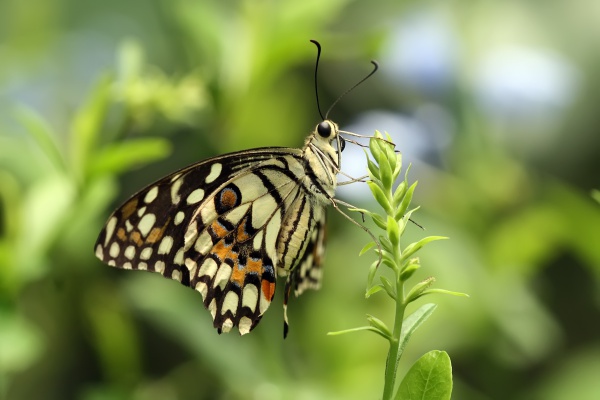Facts About Papilio demoleus
The Papilio demoleus, commonly known as the lime butterfly, lemon butterfly, lime swallowtail, or chequered swallowtail, is a butterfly species widely distributed across Asia, Australia, and several other regions. Unlike many other swallowtail butterflies, it lacks the characteristic tail extensions on its wings. Unfortunately, this butterfly is considered both a pest and an invasive species due to its ability to inflict significant damage on citrus plants, which are its primary food source. Over time, it has spread to locations such as the Seychelles, Hispaniola, Jamaica, and Puerto Rico.
This butterfly is visually striking, featuring black wings adorned with yellow bands and irregular spots. The typical wingspan ranges from 80 to 100 mm. The caterpillars of the lime butterfly feed on leaf tissue as they grow, posing a considerable threat to citrus plants. It is commonly found in countries across Asia, such as India, China, and Indonesia, and is also prevalent in Australia.
One of the key factors contributing to the lime butterfly's successful spread is its adaptability. It thrives in various environments, including savannahs, gardens, and forests. Its preference for citrus plants and strong flight capabilities make it an effective invader. These butterflies are often seen engaging in activities like mud-puddling, visiting flowers, and basking in sunny, open areas. They undergo multiple generations each year, with a lifecycle encompassing the stages of egg, caterpillar, pupa, and adult butterfly.
Several subspecies of Papilio demoleus exist, each found in different parts of the world. However, the butterfly faces challenges from parasites, predators, and fungal infections. In agriculture, it is a well-known pest, particularly harmful to young citrus trees and nurseries. Farmers have employed various pest control methods, including hand-picking the caterpillars and using pesticides, although some pesticides have been banned due to their detrimental environmental effects.

 Sri Lanka
Sri Lanka